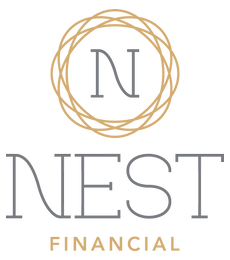Nothing in life is free, or so wise men say.
In fact, TNSTAAFL (there’s no such thing as a free lunch) is a principle of economics. If you get something, you’re paying for it, one way or another.
The same is true when it comes to financial advising and investment management services.
Contrary to what eager candidates for your business might have you believe, no financial advisors work for free. We’ve covered the different ways in which advisors get paid in a previous blog post.
NEST, our investment management services, operate on a 100% fee-based model. This means that we do not engage in selling financial products for the sake of earning commissions. Our approach to business is different. We consider our clients as partners, not as targets. Our income is directly tied to the success of our clients. We charge a flat fee of 1% based on our clients’ accounts, which aligns our growth and losses with theirs. This motivates us to work diligently in order to maximize the growth of your money. However, to maintain NEST as the bespoke and boutique financial firm we aspire to be, we have to limit the number of clients we accept. As a result, we have minimums in place. We often receive inquiries about these minimums and their necessity. This post aims to provide clarity on the matter.
What are minimums?
NEST for investment management services requires you to meet a minimum initial investment as one of the qualifiers. As of publication, we have set the minimum investment threshold at $250,000, although this amount will be changing in 2023. Please stay tuned for our next post where we will explain the changes we are making. Most financial advisors also have minimum investment thresholds, which can begin at $25,000 and increase from there. The minimum serves as a starting point for establishing your financial relationship. By having this minimum requirement in place initially, it covers the cost for the financial advisor to manage your money. Subsequently, your account can ideally grow through investments and additional contributions.
Why does NEST have a minimum?
That minimum investment is calculated to ensure that we can keep our client list at the scale at which we can give each the attention they, and their financial goals, deserve.
How? By setting minimums high enough that with a full roster of clients at the minimum, we could hit our own business goals, ensuring that we keep our shingle hung for many years to come.
Let’s look at some hypothetical numbers:
- With a minimum of $100,000 and a 1% flat fee, if every account was at the minimum, we would have to keep a thousand clients to generate $1 million in revenue per year.
- With a minimum of $250,000, a 1% flat fee, and the same revenue goals, we would only have to keep 400 clients.
Bear in mind that these numbers are for demonstration purposes only. But the message is the same.
The fewer clients we’re able to keep while still meeting our business goals, the more attention we can give to NESTers. That means we can stay small, stay Austin, stay boutique.
We can retain that cornerstone of values which NEST was built on, which is to be a small, personalized alternative to the big firms.
At NEST, clients have names we know and goals we care about. Minimums allow us to keep it that way.
How minimums benefit NEST clients
Simple — each client gets more personalized attention. With more time throughout the year to give to each client, we have more opportunities for one-on-one calls, goal calibration, portfolio reviews, and personalized strategy.
It also means more time to answer questions and focus on furthering our clients’ financial education.
How minimums benefit NEST
As you know, we actively manage our investment portfolios. We’ve said again and again that sticking clients into a preset portfolio, a la Modern Portfolio Theory, is lazy and inefficient.
By keeping a smaller client roster, we’re able to focus our time on macroeconomic data gathering, analyzing that data, and using it to make daily adjustments to our portfolios to catch whatever wave the economic tide brings.
Ratios have nothing to do with what we do. And having a smaller client list leaves us time to do things right.
When we can do things better, our clients make more money, plain and simple. And since, as a fee-based firm, our success is directly tied to our clients’ success, when we have the time to focus on actively managing and growing our portfolios, our business also meets its goals.
Everyone wins!
If you’re already a NESTer, reach out to us with any questions you have about your account, the economy, or what we’re doing to help you reach your financial goals. If you’re not part of the NEST family yet, why now schedule a no-obligation call with us? With nearly 30 years of experience in finance, we have the knowledge and the skills to get you to your financial goals.
Find us on:
LinkedIn Facebook Yelp Twitter
DISCLAIMER: We are legally obligated to remind you that the information and opinions shared in this article are for educational purposes only and are not financial planning or investment advice. For guidance about your unique goals, drop us a line at info@nestfinancial.net.






[…] We’ve already talked about what they are, why we use them, and why they’re important. In this post, we’ll get into how we set NEST’s minimum, and why in a fluctuating economy and […]